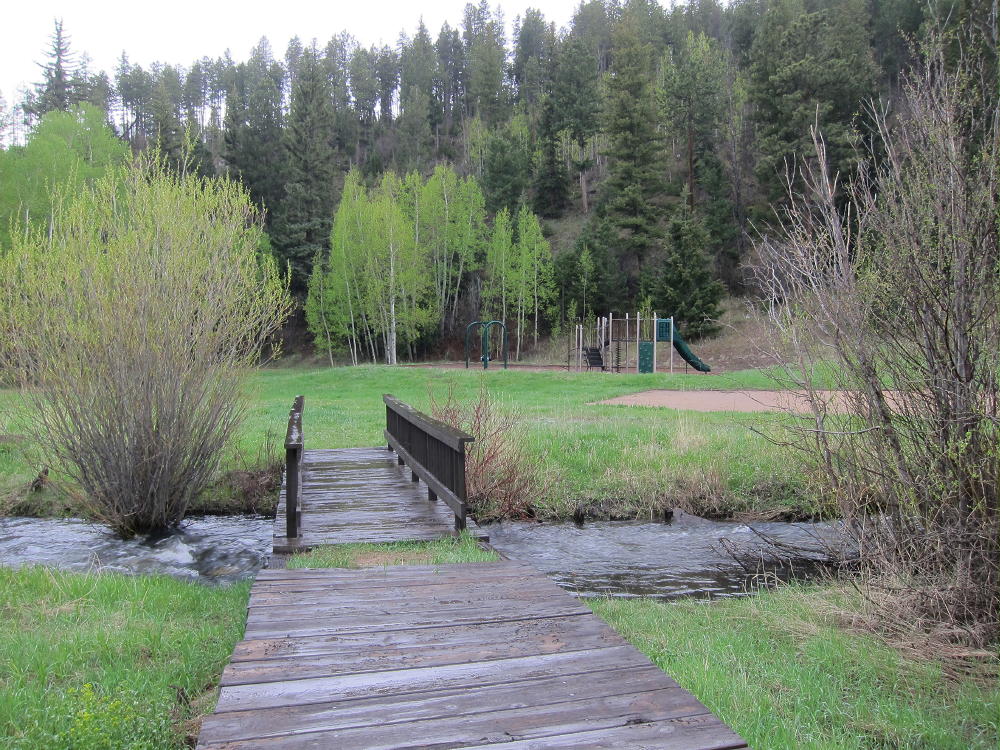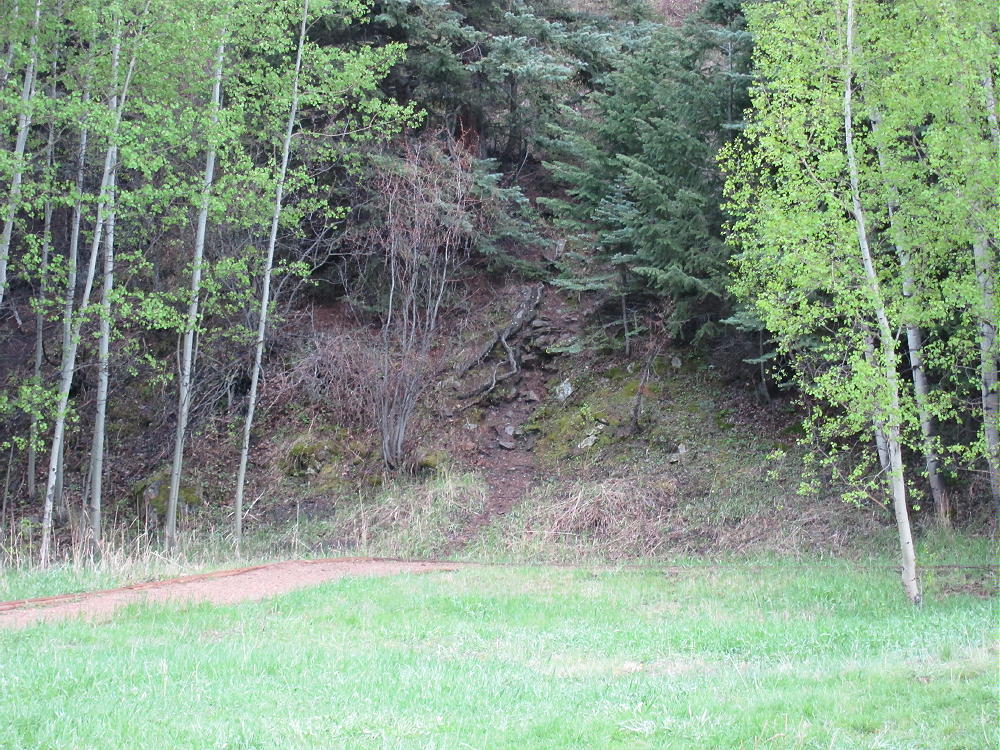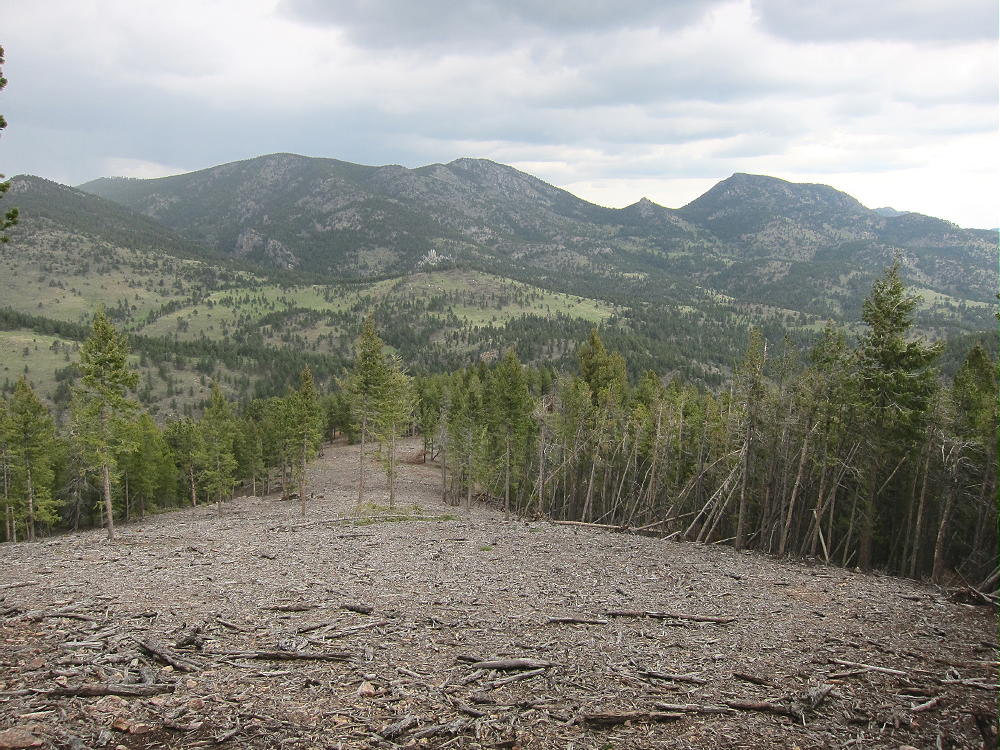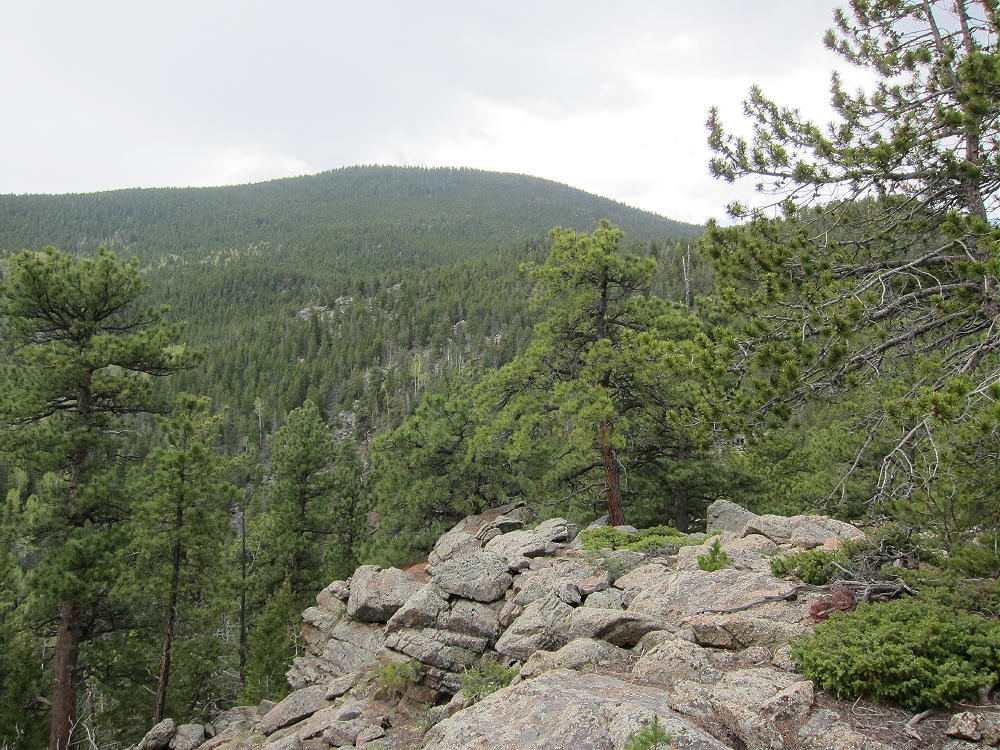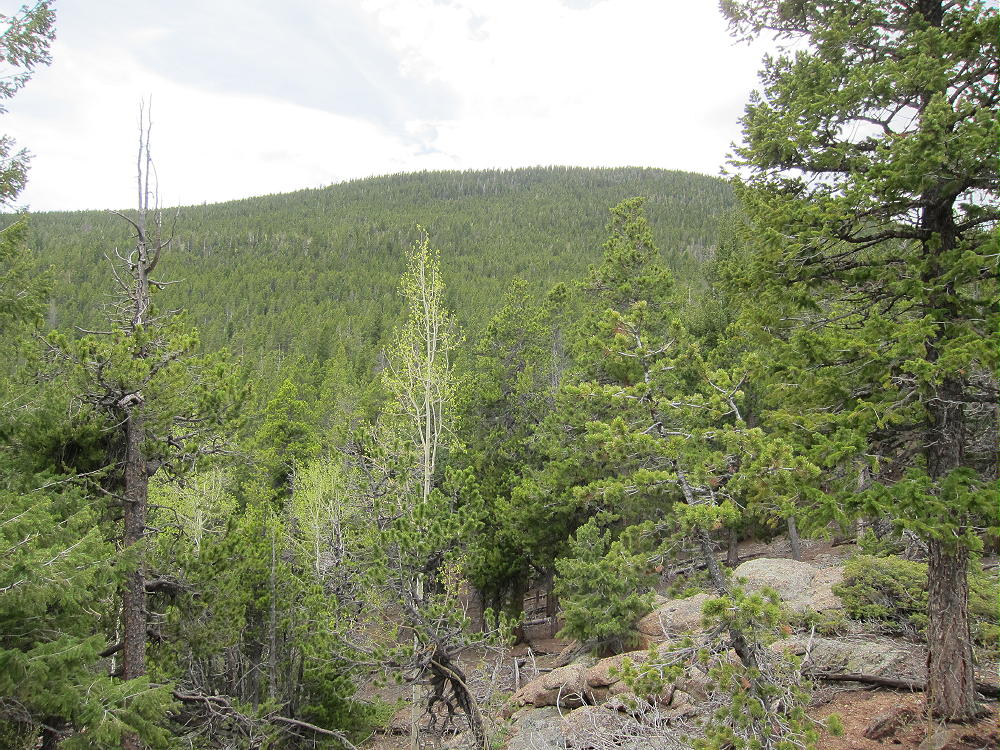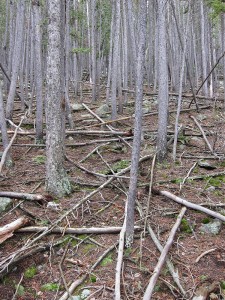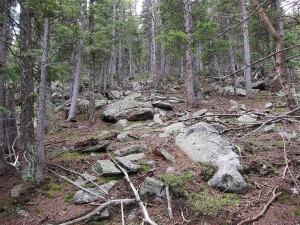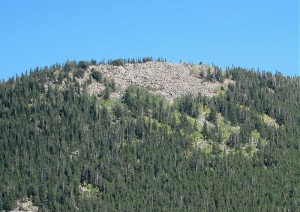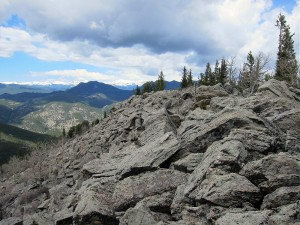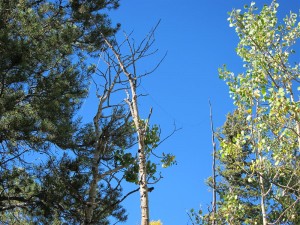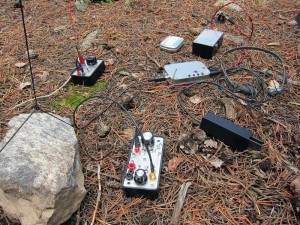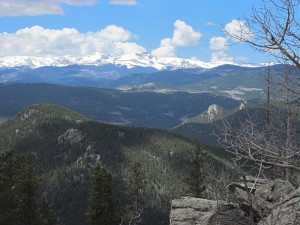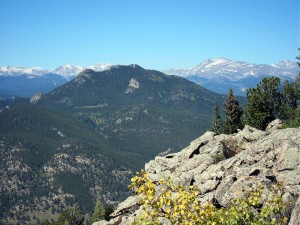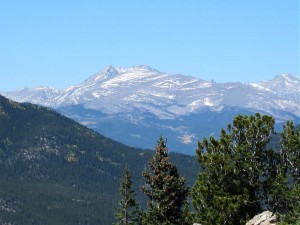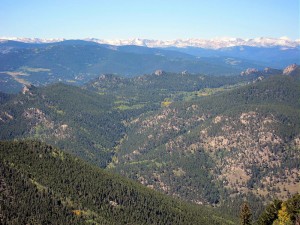W0C/FR-049
Centralia Mountain
2986 M / 9795 FT
Sep 26, 2013 First Activation
May 26, 2014 Second Activation
by KX0R
Centralia Mountain is a prominent peak located just south of Golden Gate Canyon State Park west of Denver.
There are several roads to the Park – start by driving to Golden. Follow Highway 93 to the north side of Golden, and turn west onto Road 70, Golden Gate Canyon. Follow this winding paved highway up into the mountains until it drops down into the Ralston Creek Drainage – there is a sign for the park and the Visitors Center. Unless you have a pass, buy one at the Visitors Center, and drive east along paved Road 57, which leads down Ralston Creek. After about 3 miles there is sign for the Nott Creek parking area – turn north and park immediately in the first parking lot. Be sure that your State Parks Pass is displayed in your vehicle’s front window. This is the best place to start your climb up Centralia.
Centralia Mountain is partly surrounded by private land, and there are no designated trails to the summit. Climbing and activating this peak requires good navigation and route-finding skills. There are probably several reasonable ways to climb Centralia, but private land and limited access reduce the good options. I found a surprisingly efficient off-trail route up from Nott Creek.
Walk south from the parking area, cross the paved road, and then cross Ralston Creek on a foot-bridge west of the large barn.
Look carefully and find an informal path that leads up the steep ridge south of the children’s play area.
Climb about 100 vertical feet up to the ridge top, head uphill and west, and ascend near the top of the ridge. Continue climbing for several hundred vertical feet, and reach a large area where the forest has been cleared, probably for wildfire prevention.
Stay within the cleared area, and climb south to the highest point that has been cleared. This leads to an interesting ridge that is easy to climb.
There are several rocky points along the ridge that must be passed on one side or the other. The last of these “maxima” – near 8920 feet – has an exposed rocky knob from which you get a good view of the east side of Centralia Mountain. Take a good look, because visibility is somewhat limited in the forest. Backtrack down and pass the knob on the south side. The remaining part of the climb is forested, but the lower part is relatively open.
The last thousand vertical feet up the east side of the mountain may be climbed directly. An ascending traverse heading southeast works well. Aim for a point several hundred feet southeast of the actual summit. If you aim for the summit, the slope is steep and covered with rocks that have come down from the top. The lichens on the rocks are slippery when wet. Heading southeast of the summit is more pleasant and avoids the rocky areas, and there is a natural route that goes right up toward the summit. There are useful game trails up there, and although there are some downed trees, most of them are easy to get over. This is an incredibly easy off-trail route, considering the length and the 2200 vertical feet of ascent required. A GPS is good for route-finding on the last steep section – the summit is not visible from down in the woods.
- Centralia Lodgepole Forest
- Centralia Summit Climb
It’s only about 2 miles and 2200 vertical feet to the summit of Centralia. I climbed it in 1-1/2 hours, when the woods were cool and damp, with hail from the previous day’s storm still on some of the slopes and near the summit. Don’t mess with this mountain, unless you’re OK with off-trail hiking and have the required level of fitness!
The summit ridge is long and rocky, with a very steep slope on the west side.
- Centralia Summit West Side
- Centralia Summit
There is a nice flat spot southeast of the summit, within the Activation Zone, with several useful trees and a sheltered spot to operate from.
- Centralia First Activation Antenna
- Centralia Rig
The peak is very prominent, has low RF noise, and propagation is good in all directions. It should be a great site for VHF/UHF across most of the Denver Metro Area and beyond, as well as HF all over the world!
- Centralia View across Visitor Point to James Peak
- Centralia Summit to Thorodin and Arapaho
- Arapaho Peak from Centralia
- Centralia View NW
Very few people visit this special summit. It’s a SOTA Classic!
George Carey Fuller
KX0R
![]() !! WARNING !! There are old mountaineers, and
bold mountaineers... there are no old-bold mountaineers.
Hiking and mountain climbing are potentially hazardous activities particularly in Colorado with its extreme elevations. I am not accepting responsibility for any death or injury resulting from activations based on my trip reports. Proper training, experience, and personal capability assessment is required - enjoy!
!! WARNING !! There are old mountaineers, and
bold mountaineers... there are no old-bold mountaineers.
Hiking and mountain climbing are potentially hazardous activities particularly in Colorado with its extreme elevations. I am not accepting responsibility for any death or injury resulting from activations based on my trip reports. Proper training, experience, and personal capability assessment is required - enjoy!












